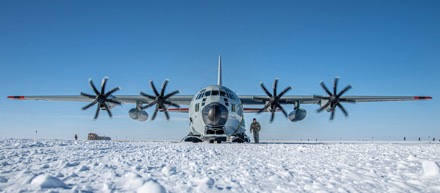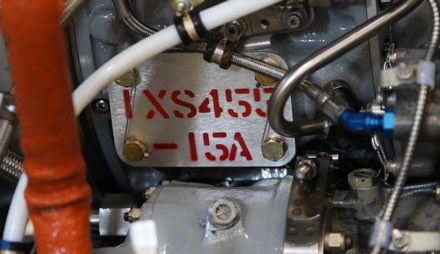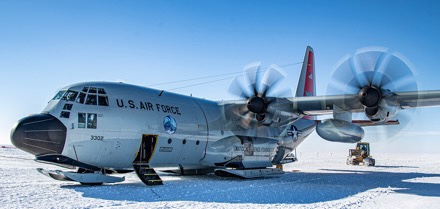SCHENECTADY, N.Y. (AFNS) —
LC-130 Hercules aircraft will have a smoother takeoff from Antarctica and Greenland thanks to the 109th Maintenance Squadron.

Propulsion specialists with the 109th assembled the first Air National Guard-built T56 3.5 turbo engine. The 3.5 modification is part of an Air Force initiative to update C-130 aircraft.
The 109th’s engine is the first to be assembled in-unit by Airmen.
This 3.5 engine is the finishing piece to modernizing the 109th’s legacy fleet into a more powerful and eco-friendly force.
Operating the Defense Department’s only ski-equipped LC-130 Hercules aircraft, the 109th MXS deploys annually to the austere environments of Greenland and Antarctica in support of the National Science Foundation.
Occasionally, the aircraft have trouble taking off from icy surfaces of these areas of operation due to heavy cargo loads or friction lock under the skis.

Traditionally, jet-assisted takeoff bottles are used to create extra thrust to get the aircraft off the snow or ice and into the air. JATO production, however, officially stopped in 1991.
Maj. Jim Roth, 109th MXS commander, explained the increasing challenges using JATO.
“They are depleting, and every time we use them, we have to shoot eight off at a time, and it begins to present a real logistical concern when it comes to the decreasing supply,” Roth said.
The new T56-8-15A 3.5 engines, combined with the LC-130H’s NP2000 eight-bladed propellers, are the answer to beginning to shift away from JATO bottles.
“The updated features allow the aircraft to create the same thrust as JATO bottles but at lower operating temperatures, making them more eco-friendly,” said Staff Sgt. Jason Candido, a propulsion specialist with the 109th. “We’re looking at an efficiency of about 20 percent more fuel efficiency compared to the 3.0 engine.”

The aircraft will also be able to carry heavier cargo loads to remote polar regions.
“We are the only heavy airlift able to reach these remote polar camps. These new engines allow for greater range and capacity. We’re advancing the Arctic Strategy that much more,” Roth said. “It’s the expertise and abilities of 109th Airmen like Jason Candido that drive us forward.”
Candido, who has been at the 109th for more than 10 years, was one of the Airmen who assembled the new engine.
“This is the exact same engine that we’ve been using for years. Just the internals are different,” Candido said. “The updated engine uses different types of metal in the turbine and compressor that have better heat retention, giving us the same power at lower temperatures.”
Assembling the 3.5 engine is a two-person job that took approximately a month to complete, he said.
“This is exactly what the National Guard is all about. It’s about retaining key talent and having an experienced workforce. Bringing that to the table allows us to do this stuff,” Roth said.
“For me, there’s a lot of pride in putting this engine together,” Candido said. “A lot of people just look at the engine, but I look at my work. It’s like art.”
The improved engines will also cut down on frequent maintenance and inspection.
When the LC-130Hs finished the transition from four to eight-bladed propellers in 2018, Candido said there was a noticeable difference in maintenance time.
“Whenever we had a seal leak in Antarctica, you couldn’t replace that one blade. You had to do the entire process to put a brand new one back on,” Candido said.
The eight-bladed propellers, however, are designed for a simpler fix in the event of a seal leak.
“We went from having an engine with a day-and-a-half downtime to maybe two hours, and then it’s flying again,” Candido said.
The 109th propulsion shop has the approval to assemble the rest of the 3.5 engines, some in Little Rock, Arkansas.
Members from the 109th MXS will attend a conference at the end of March to discuss a timeline to outfit all LC-130Hs with the 3.5 engines.
“We are plowing ahead with our own builds to help supplement the force. We are building ours quickly, so we’re ready to go as soon as possible,” Roth said.
By SSgt Madison Daquelente, 109th Air Wing Public Affairs


This mission (ski-equipped C-130s) was flown by the Navy before being transferred to the Air Guard a couple of decades ago. A friend of mine was a pilot with the unit; they would fly low over the ice near the shore, spooking the penguins, who would jump into the water and be eaten by orcas. Pretty soon, the orcas associated the droning of the engines with penguin meat, and would surface when they heard the C-130 overhead. They called it “ringing the Lockheed lunch bell.”